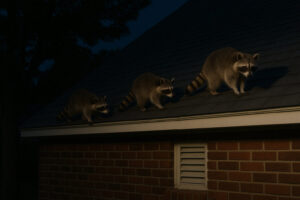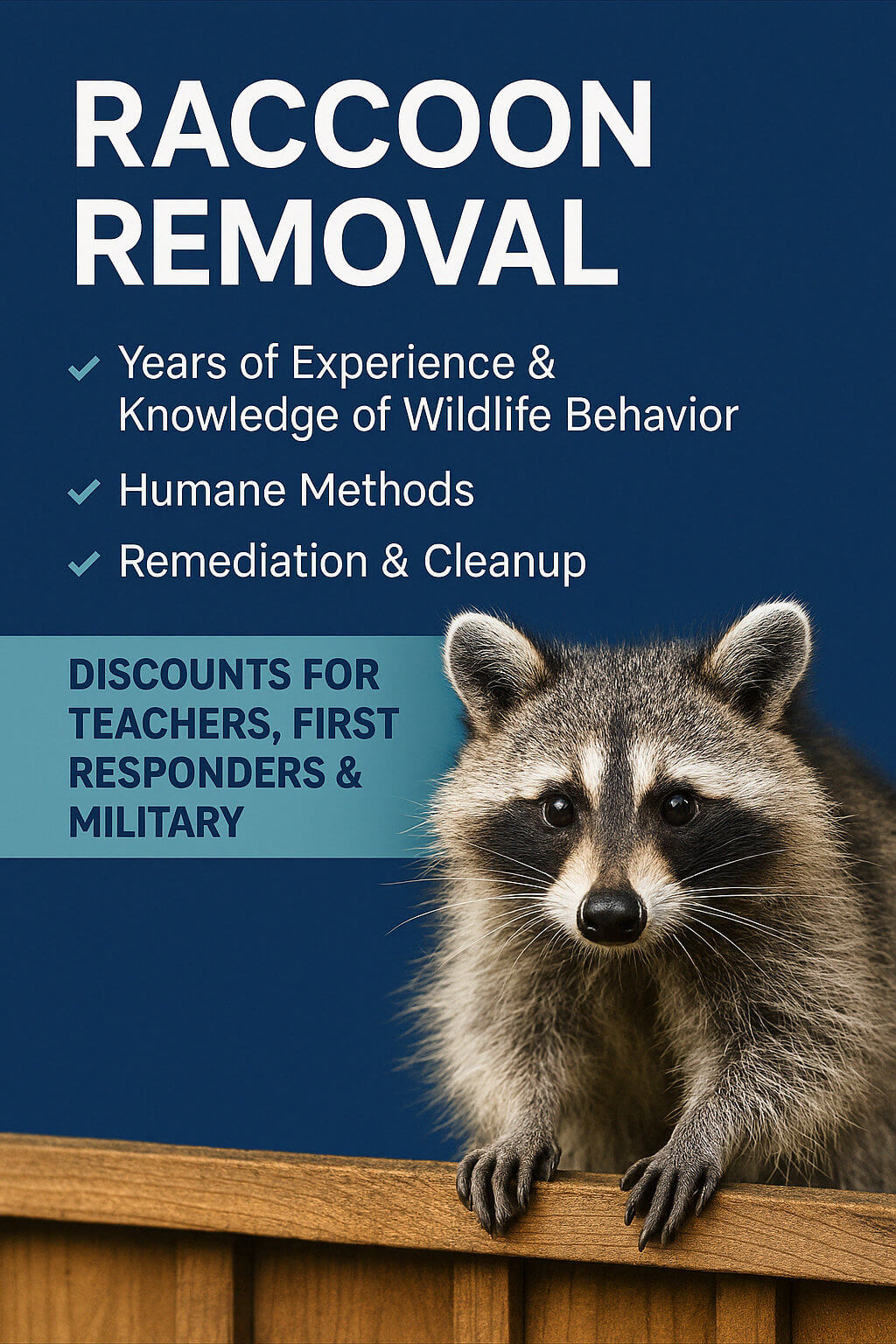You've heard the scratching, thumping, and scurrying in your attic at night. The evidence is clear: raccoons have made themselves at home in your house. Your first instinct might be to handle the problem yourself. After all, how hard could it be to remove a raccoon?
Before you head to the hardware store for traps or search "DIY raccoon removal" on YouTube, it's worth understanding what you're really getting into—and why many homeowners who start with DIY end up calling professionals anyway.
It's easy to see why DIY raccoon removal seems attractive:
With so many resources at your fingertips, removing raccoons yourself might seem straightforward. You set a trap, catch the raccoon, release it far away, and your problem is solved—right?
Unfortunately, raccoon removal is rarely that simple. What starts as a weekend project can quickly become a frustrating, expensive, and potentially dangerous ordeal.
Before attempting DIY raccoon removal, consider these common pitfalls:
That noise in your attic might not even be raccoons. Squirrels, rats, possums, and even feral cats can create similar sounds. Each animal requires different removal techniques, and using the wrong approach can be ineffective or make matters worse.
Professionals can quickly identify the specific species through signs, tracks, droppings, and behavior patterns—ensuring the right strategy from the start.
Spring and summer are prime raccoon nesting seasons. If you remove an adult female without locating her babies (kits), you've created an even bigger problem:
Professional wildlife technicians know how to locate and safely remove entire raccoon families intact.
Did you know that in Colorado, you need specific licenses to trap and relocate certain wildlife? DIY trappers often unknowingly break state wildlife laws and can face:
Licensed wildlife professionals understand and follow all local regulations to ensure legal compliance.
Raccoons may look cute, but they're wild animals that can pose serious health risks:
Without proper equipment and training, DIY removal puts you at significant risk of injury and disease exposure.
Even if you successfully remove a raccoon, without proper exclusion work, you're likely to have recurring problems:
A one-time trapping rarely solves the underlying problem.

Professional wildlife control services offer comprehensive solutions that address the entire problem:
Professionals use species-appropriate traps, techniques, and handling methods that minimize stress to the animals while maximizing effectiveness.
Experts don't just remove visible raccoons; they conduct complete inspections to:
When babies are present, professionals ensure the entire family stays together during the removal process, using specialized techniques to:
The most important part of raccoon control isn't the removal—it's preventing their return through:
Professional services understand and follow all relevant regulations:
After raccoons are gone, professionals can:
While DIY might seem cheaper initially, the total costs often exceed professional services:
At Bluetick Pest & Wildlife Control, we bring both expertise and compassion to raccoon removal:
DIY raccoon removal can occasionally work in very simple situations (like a single raccoon that hasn't established residence), but in most cases, the risks and hidden costs outweigh the initial savings.
For effective, long-term raccoon control that protects your home, health, and peace of mind, professional wildlife removal is almost always the smarter choice.
Consider this: some of our raccoon removal customers tried DIY methods first, only to call us after encountering complications. Skip the frustration and get it done right the first time.
Raccoon problems don't improve with time—they only get worse as damage accumulates and animals become more established.
Call Bluetick Pest & Wildlife Control today at 720-394-6335 to schedule a thorough raccoon removal inspection. Our experienced technicians will provide a complete assessment and clear recommendation for your specific situation.
Related Resources:
